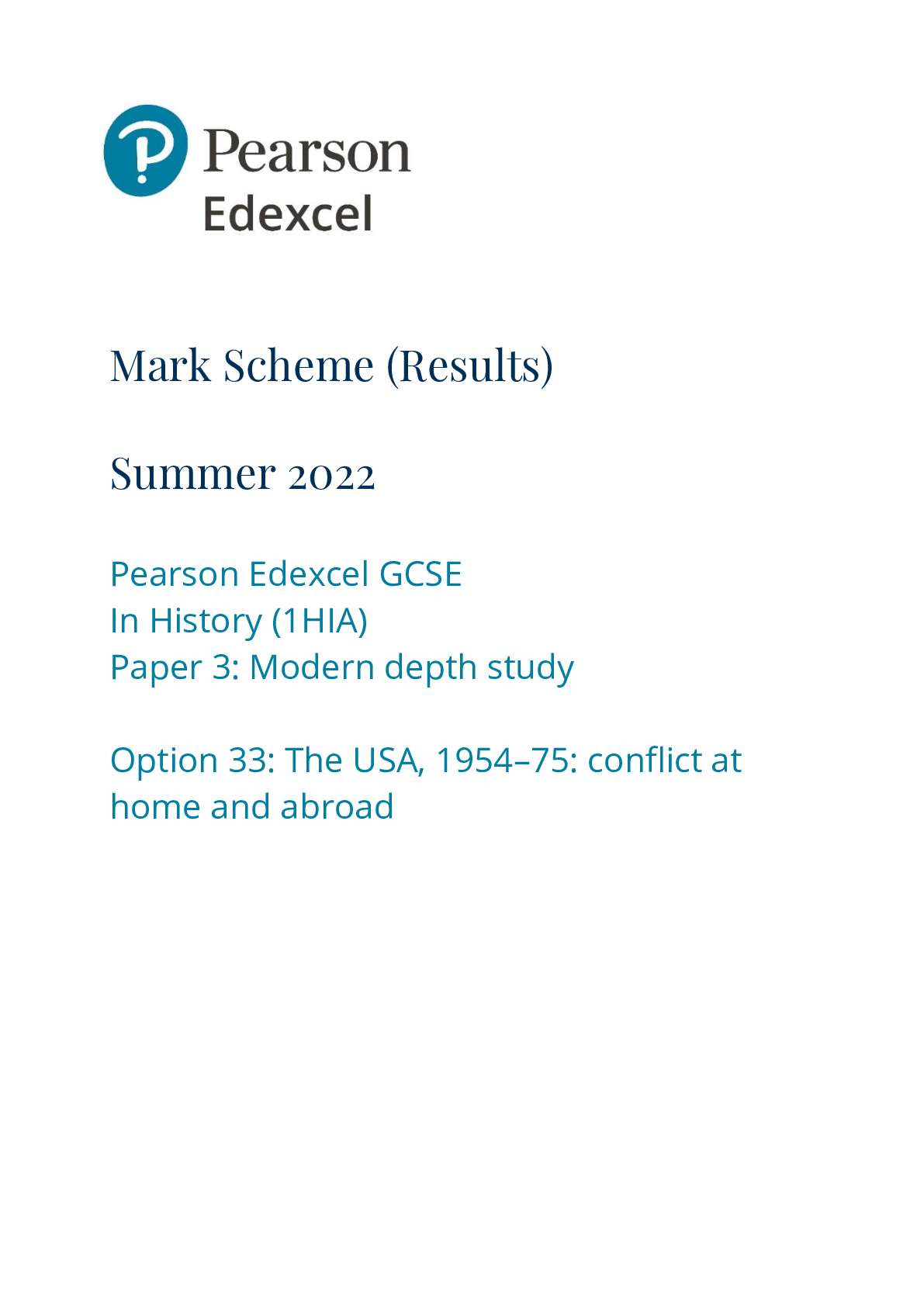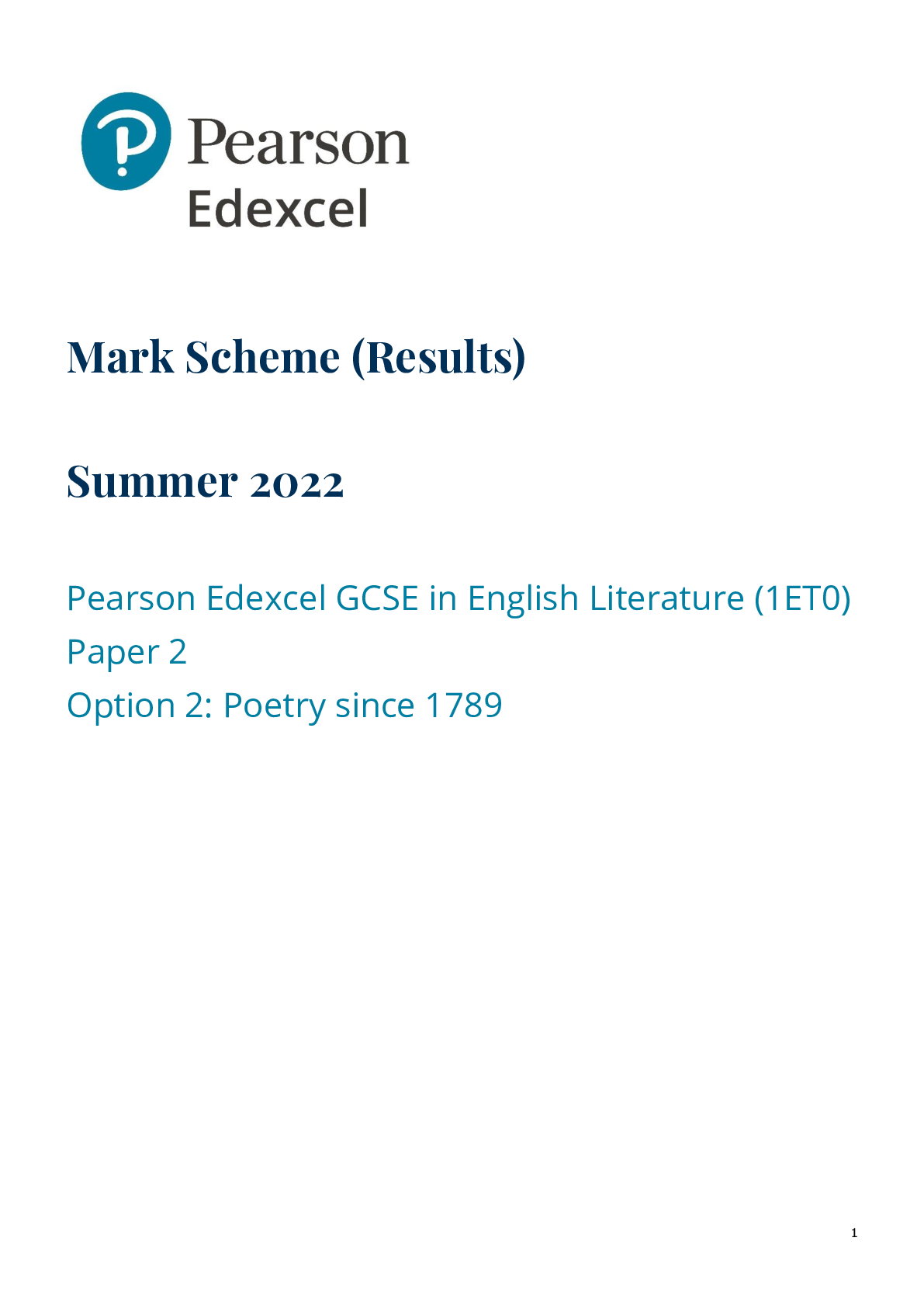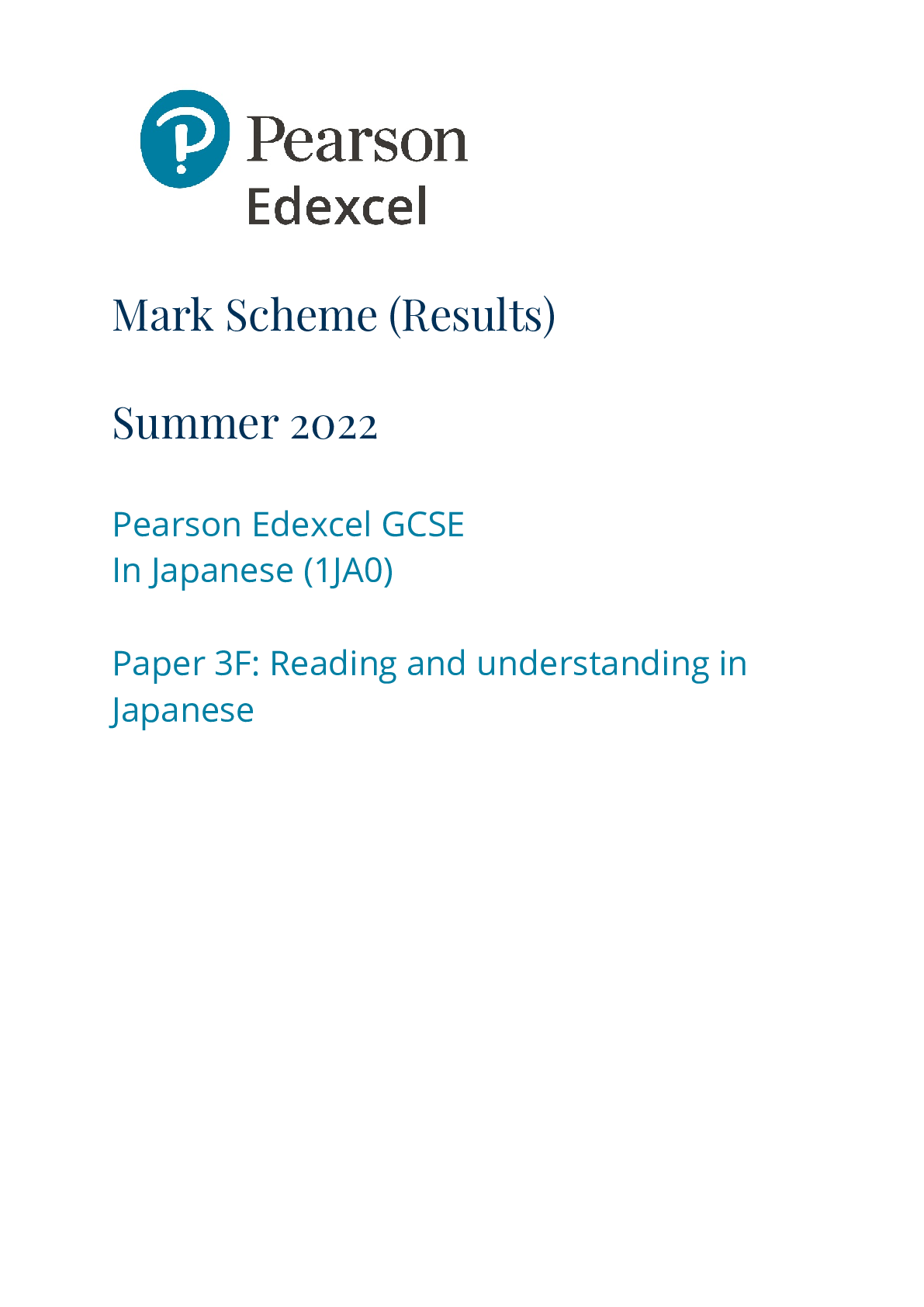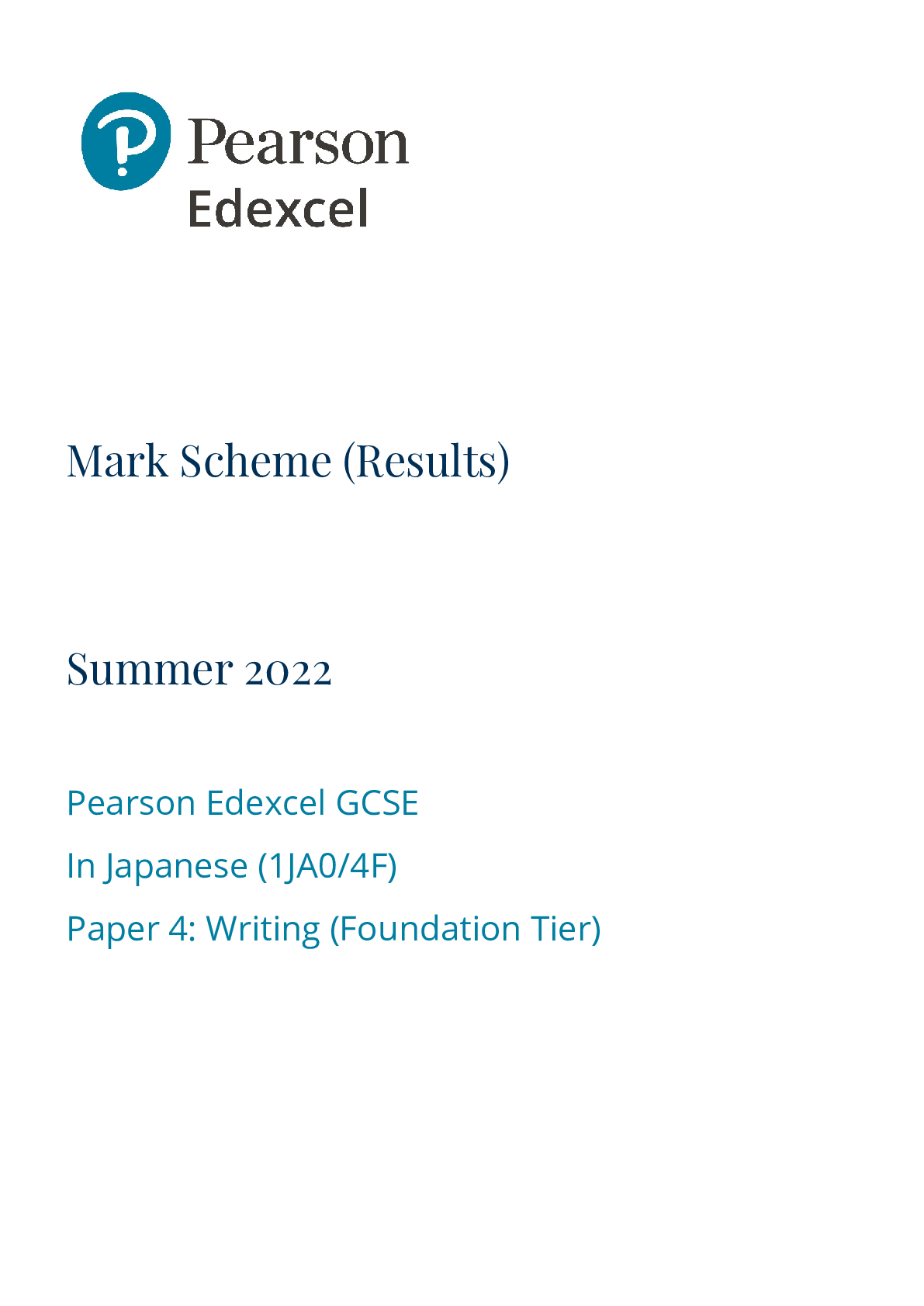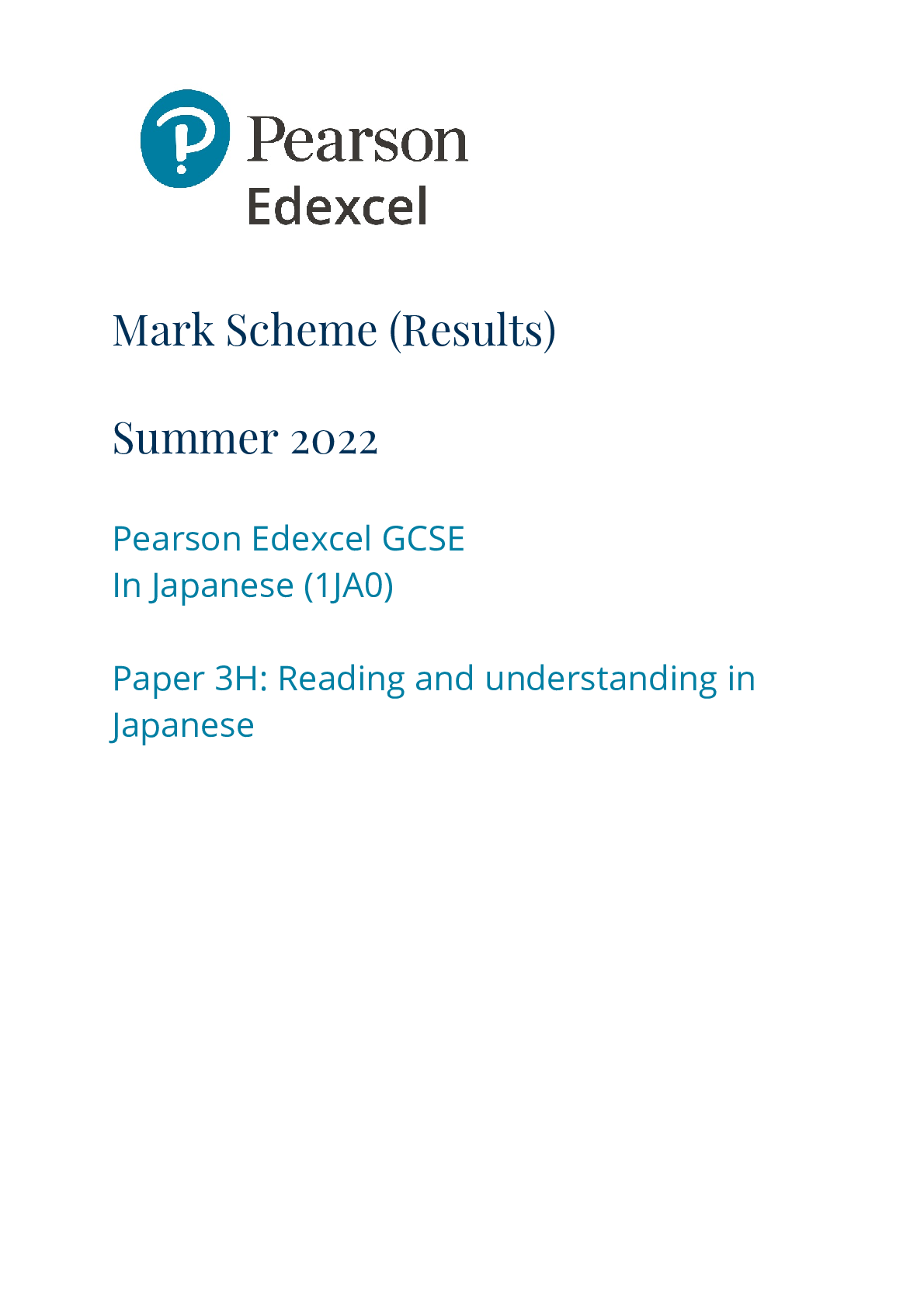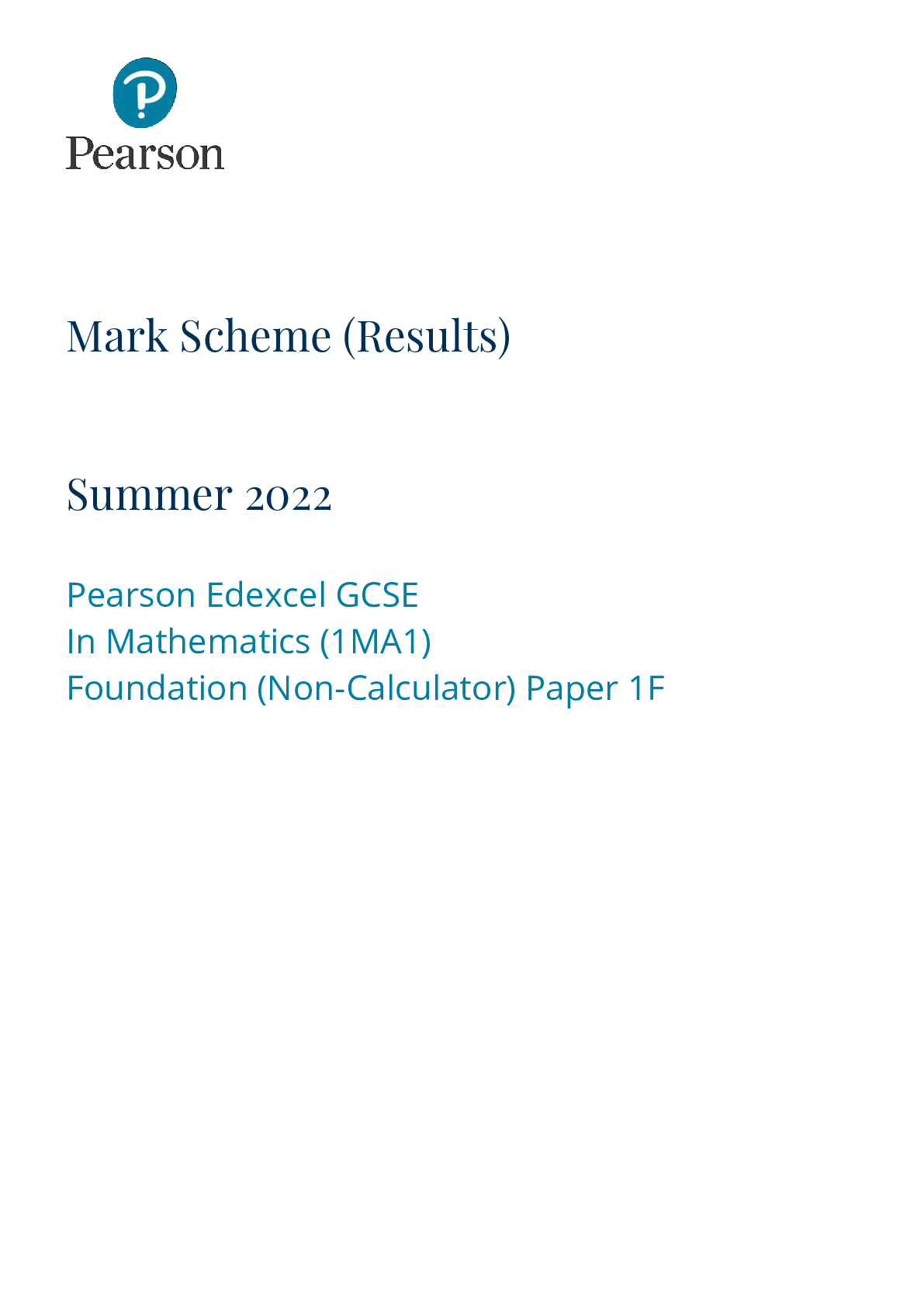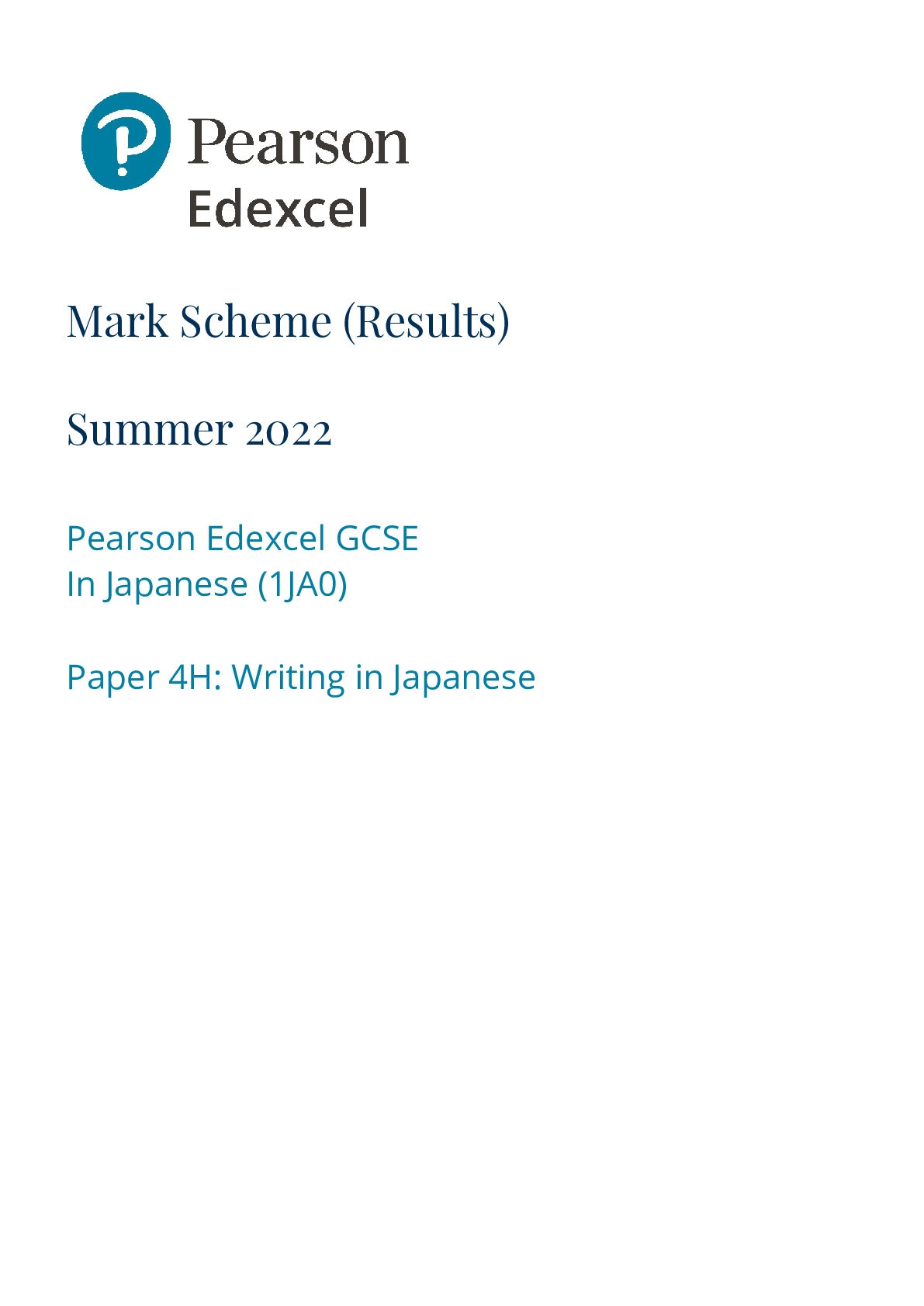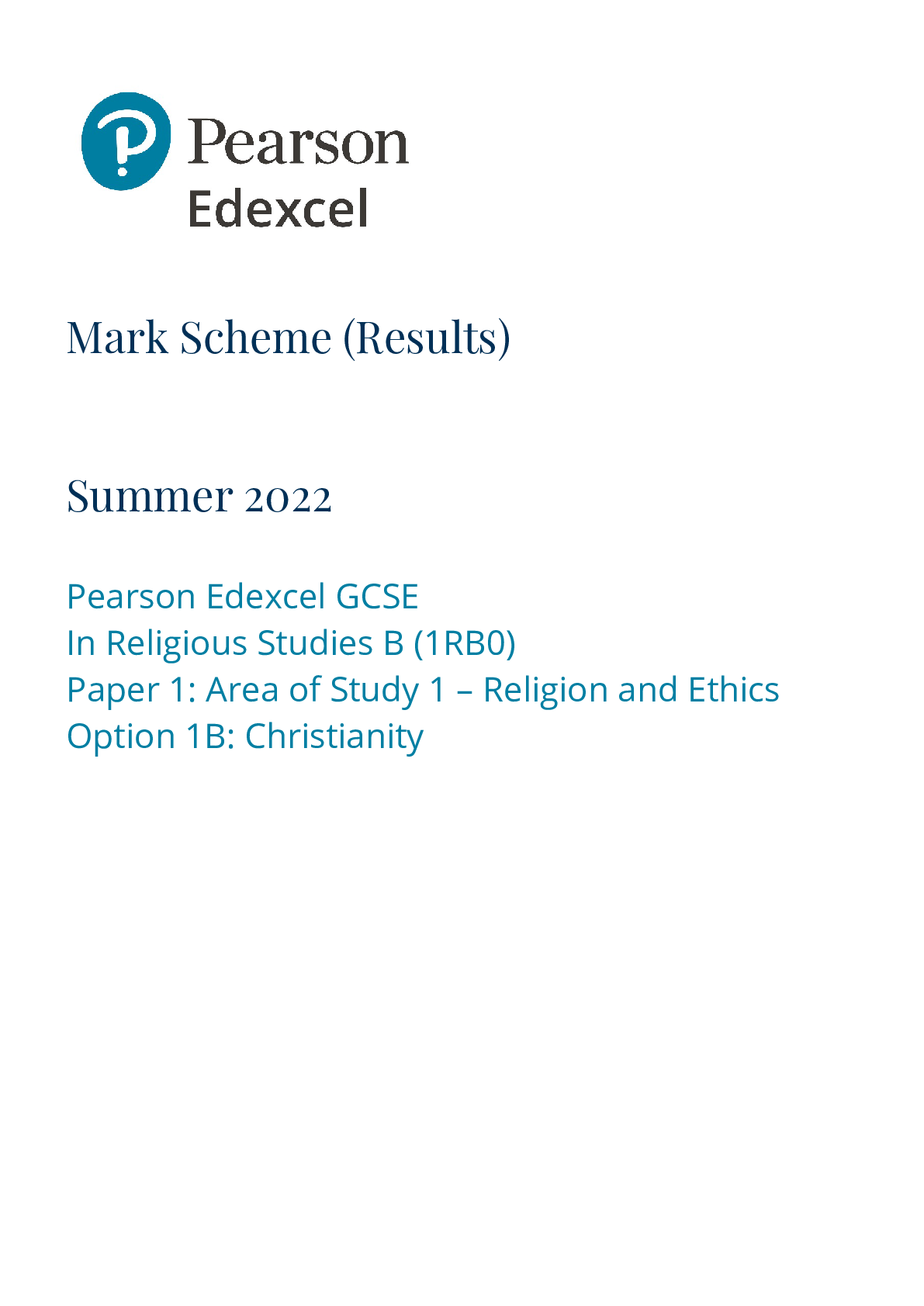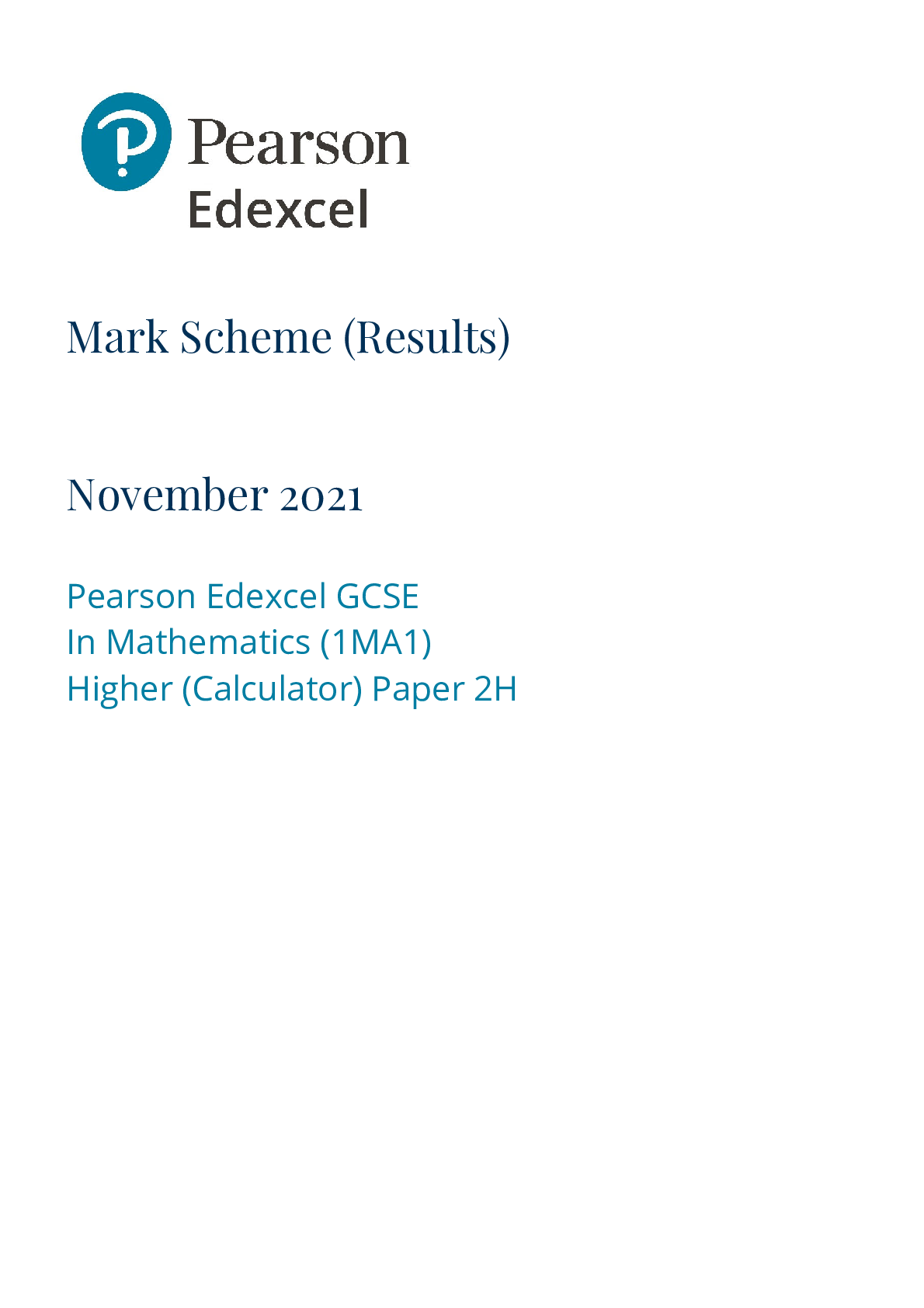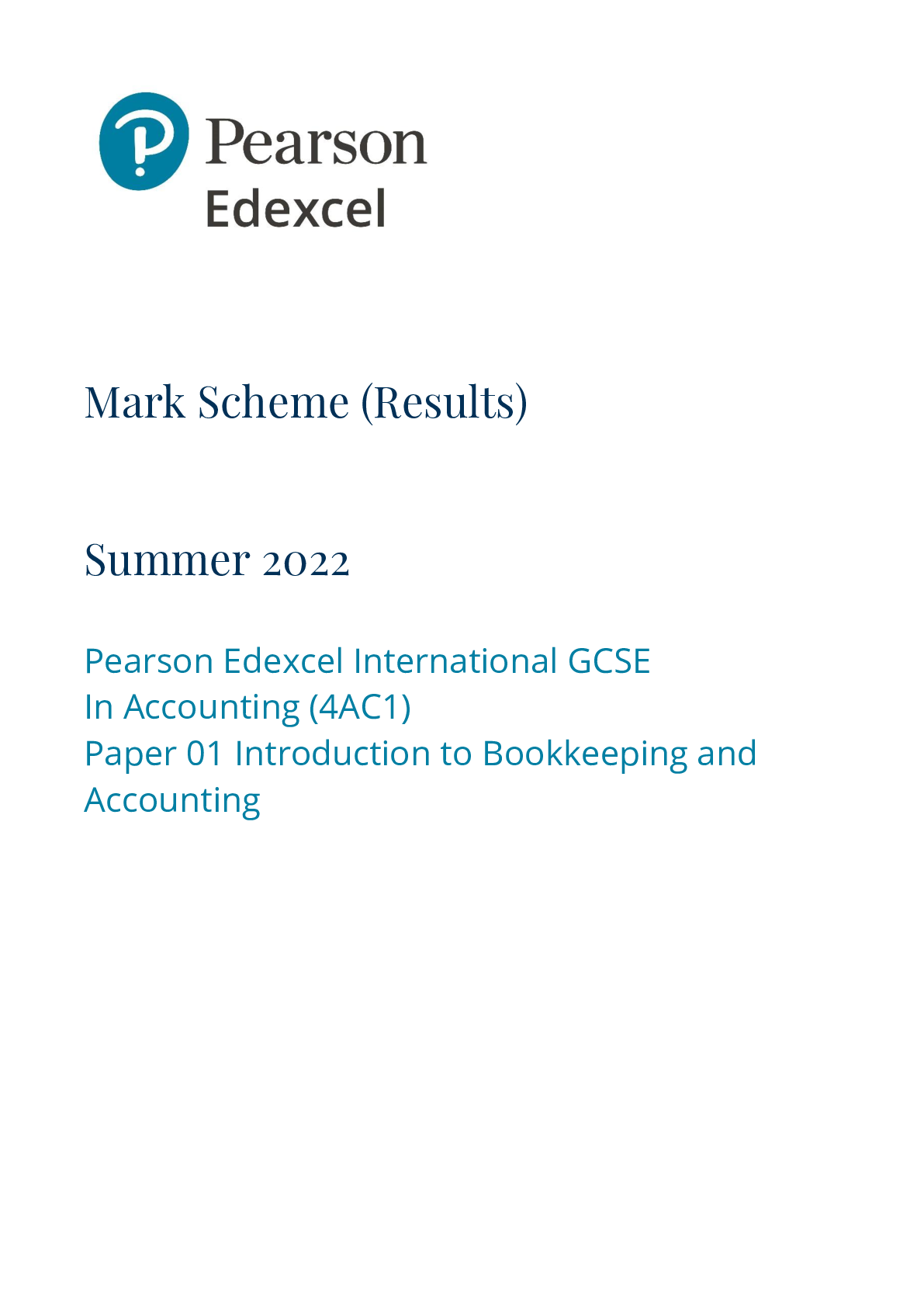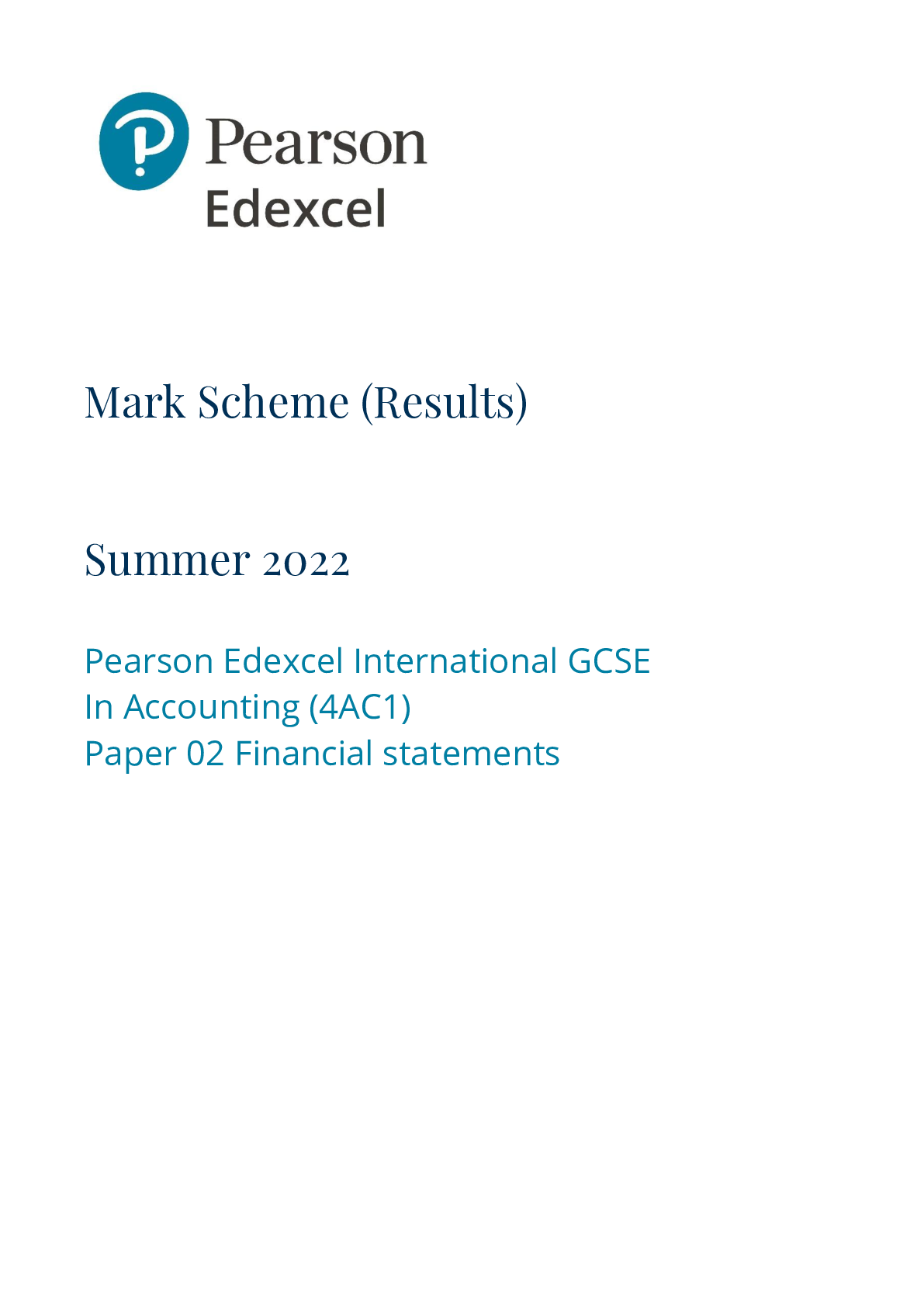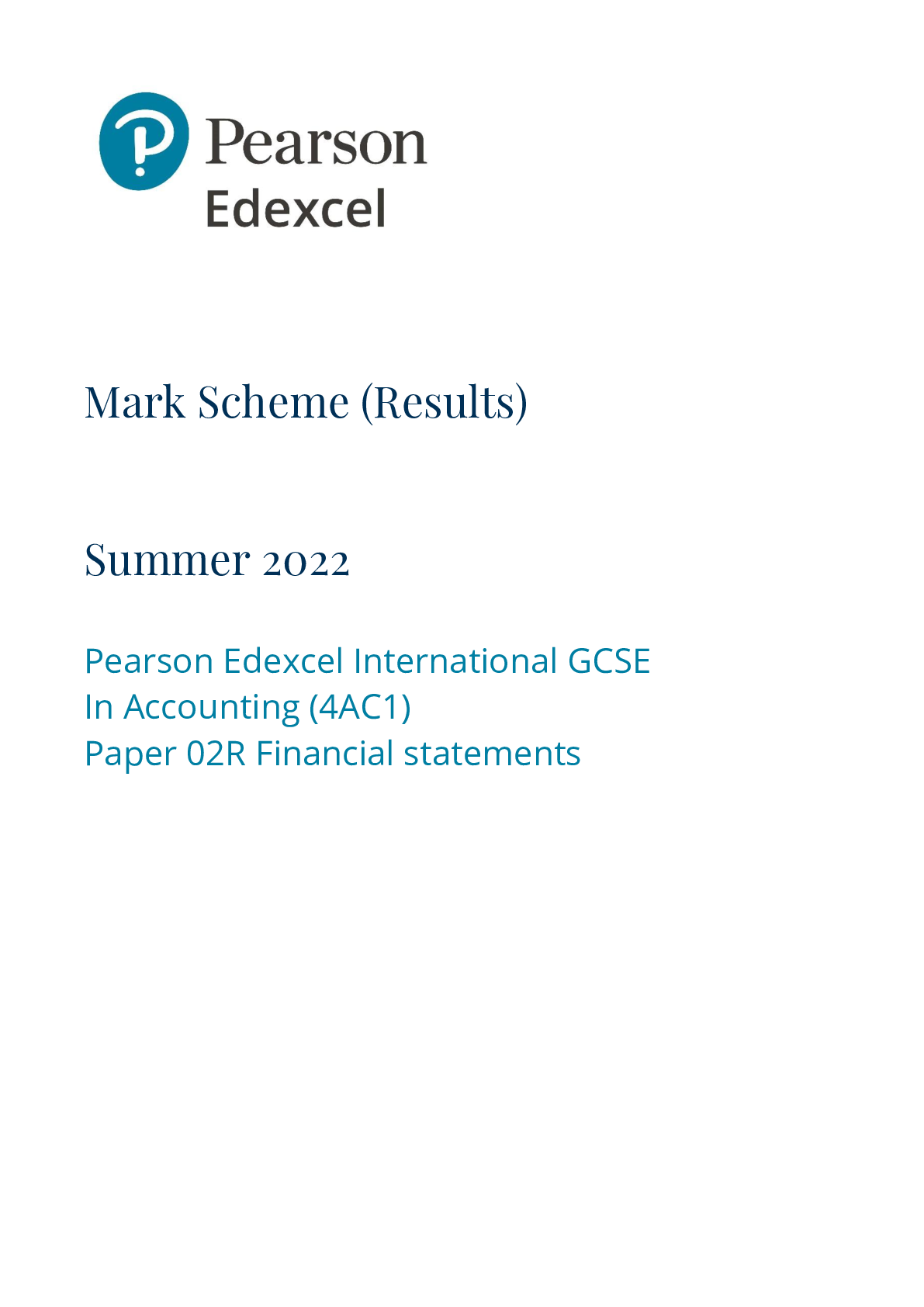Mathematics > MARK SCHEME > Mark Scheme (Results) Summer 2022 Pearson Edexcel GCSE In Mathematics (1MA1) Foundation (Calculator) (All)
Mark Scheme (Results) Summer 2022 Pearson Edexcel GCSE In Mathematics (1MA1) Foundation (Calculator) Paper 3F Edexcel and BTEC Qualifications
Document Content and Description Below
Mark Scheme (Results) Summer 2022 Pearson Edexcel GCSE In Mathematics (1MA1) Foundation (Calculator) Paper 3F Edexcel and BTEC Qualifications Edexcel and BTEC qualifications are awarded by Pears... on, the UK’s largest awarding body. We provide a wide range of qualifications including academic, vocational, occupational and specific programmes for employers. For further information visit our qualifications websites at www.edexcel.com or www.btec.co.uk. Alternatively, you can get in touch with us using the details on our contact us page at www.edexcel.com/contactus. Pearson: helping people progress, everywhere Pearson aspires to be the world’s leading learning company. Our aim is to help everyone progress in their lives through education. We believe in every kind of learning, for all kinds of people, wherever they are in the world. We’ve been involved in education for over 150 years, and by working across 70 countries, in 100 languages, we have built an international reputation for our commitment to high standards and raising achievement through innovation in education. Find out more about how we can help you and your students at: www.pearson.com/uk Summer 2022 Question Paper Log Number P66380A Publications Code 1MA1_3F_2206_MS All the material in this publication is copyright © Pearson Education Ltd 2022 General marking guidance These notes offer general guidance, but the specific notes for examiners appertaining to individual questions take precedence. 1 All candidates must receive the same treatment. Examiners must mark the last candidate in exactly the same way as they mark the first. Where some judgement is required, mark schemes will provide the principles by which marks will be awarded; exemplification/indicative content will not be exhaustive. When examiners are in doubt regarding the application of the mark scheme to a candidate’s response, the response should be sent to review. 2 All the marks on the mark scheme are designed to be awarded; mark schemes should be applied positively. Examiners should also be prepared to award zero marks if the candidate’s response is not worthy of credit according to the mark scheme. If there is a wrong answer (or no answer) indicated on the answer line always check the working in the body of the script (and on any diagrams), and award any marks appropriate from the mark scheme. Questions where working is not required: In general, the correct answer should be given full marks. Questions that specifically require working: In general, candidates who do not show working on this type of question will get no marks – full details will be given in the mark scheme for each individual question. 3 Crossed out work This should be marked unless the candidate has replaced it with an alternative response. 4 Choice of method If there is a choice of methods shown, mark the method that leads to the answer given on the answer line. If no answer appears on the answer line, mark both methods then award the lower number of marks. 5 Incorrect method If it is clear from the working that the “correct” answer has been obtained from incorrect working, award 0 marks. Send the response to review for your Team Leader to check. 6 Follow through marks Follow through marks which involve a single stage calculation can be awarded without working as you can check the answer, but if ambiguous do not award. Follow through marks which involve more than one stage of calculation can only be awarded on sight of the relevant working, even if it appears obvious that there is only one way you could get the answer given. 7 Ignoring subsequent work It is appropriate to ignore subsequent work when the additional work does not change the answer in a way that is inappropriate for the question or its context. (eg an incorrectly cancelled fraction when the unsimplified fraction would gain full marks). It is not appropriate to ignore subsequent work when the additional work essentially makes the answer incorrect (eg. incorrect algebraic simplification). 8 Probability Probability answers must be given as a fraction, percentage or decimal. If a candidate gives a decimal equivalent to a probability, this should be written to at least 2 decimal places (unless tenths). Incorrect notation should lose the accuracy marks, but be awarded any implied method marks. If a probability fraction is given then cancelled incorrectly, ignore the incorrectly cancelled answer. 9 Linear equations Unless indicated otherwise in the mark scheme, full marks can be gained if the solution alone is given on the answer line, or otherwise unambiguously identified in working (without contradiction elsewhere). Where the correct solution only is shown substituted, but not identified as the solution, the accuracy mark is lost but any method marks can be awarded (embedded answers). 10 Range of answers Unless otherwise stated, when an answer is given as a range (eg 3.5 – 4.2) then this is inclusive of the end points (eg 3.5, 4.2) and all numbers within the range 11 Number in brackets after a calculation Where there is a number in brackets after a calculation eg 2 × 6 (=12) then the mark can be awarded either for the correct method, implied by the calculation or for the correct answer to the calculation. 12 Use of inverted commas Some numbers in the mark scheme will appear inside inverted commas eg “12” × 50 ; the number in inverted commas cannot be any number – it must come from a correct method or process but the candidate may make an arithmetic error in their working. 13 Word in square brackets Where a word is used in square brackets eg [area] × 1.5 : the value used for [area] does not have to come from a correct method or process but is the value that the candidate believes is the area. If there are any constraints on the value that can be used, details will be given in the mark scheme. 14 Misread If a candidate misreads a number from the question. eg uses 252 instead of 255; method or process marks may be awarded provided the question has not been simplified. Examiners should send any instance of a suspected misread to review. Guidance on the use of abbreviations within this mark scheme M method mark awarded for a correct method or partial method P process mark awarded for a correct process as part of a problem solving question A accuracy mark (awarded after a correct method or process; if no method or process is seen then full marks for the question are implied but see individual mark schemes for more details) C communication mark awarded for a fully correct statement(s) with no contradiction or ambiguity B unconditional accuracy mark (no method needed) oe or equivalent cao correct answer only ft follow through (when appropriate as per mark scheme) sc special case dep dependent (on a previous mark) indep independent awrt answer which rounds to isw ignore subsequent working Paper: 1MA1/3F Question Answer Mark Mark scheme Additional guidance 1 35 100 B1 for 35 100 oe 2 7 B1 cao 3 Two from 1, 2, 3, 4, 6, 12 B1 for any two correct factors from 1, 2, 3, 4, 6, 12 Do not allow any incorrect numbers 4 6m B1 for 6m 5 1.3 B1 cao 6 drawing of a parallelogram B2 for an accurate drawing of a parallelogram that is not a rectangle or a rhombus Accept freehand drawings with some inaccuracy if the intention is (B1 for a quadrilateral drawn with no lines of symmetry clear or for a quadrilateral drawn with rotational symmetry of order 2) 7 29 P1 for a start to a process, eg. (total apples = ) 86 + 75 + 92 (= 253) or (total oranges = ) 68 + 80 + 76 (= 224) or differences each week, eg. (week 1) 86 – 68 (= 18) or (week 2) 75 – 80 (= – 5) or (week 3) 92 – 76 (= 16) P1 for complete process, eg “253” – “224” or “18” + “– 5” + “16” A1 cao Paper: 1MA1/3F Question Answer Mark Mark scheme Additional guidance 8 (a) 28 33 B1 cao (b) Explanation C1 for explanation Acceptable examples all terms end in 3 or 8 there are no terms that end in 0 50 does not end in 3 or 8 48 and 53 are both in the sequence (could be shown) 48 is in the sequence and 50 is 2 more 5n‒2=50 so n is not a whole number. if it started at 0 then it would but it starts at 3 so it never will or shows sequence continuing up to and beyond 50 Not acceptable examples adding 5 each time will not lead to 50 (insufficient) it goes past 50 the closest number to 50 is 48 One correct, one incorrect statement gets C1 as long as they are not contradictory. 9 (a) 5 B1 cao (b) 9 B1 cao 10 (a) cross at 0 B1 cao (b) cross at 1 2 B1 cao (c) 5 8 M1 for "5" a where a > “5” or 8 b where b < 8 or for identifying all the even numbers, 2, 6 and 8 or for writing the correct probability using the wrong notation eg 5 : 8 To ft “5” the “5” needs to be clearly stated as being the number of even numbers; otherwise accept 5 only; could be indicated alongside the given numbers. A1 for 5 8 oe Could be written as a decimal (0.62, 0.625 or 0.63) or equivalent percentages to these Paper: 1MA1/3F Question Answer Mark Mark scheme Additional guidance 11 Yes (supported) M1 for 48 × 3 (=144) or 35 × 4 (= 140) or 48 ÷ 4 (=12) M1 for 48 × 3 (=144) and 35 × 4 (= 140) or “140” ÷ 48 (=2.9…) or “140” ÷ 3 (=46.6…) or “12” × 3 (=36) or “144” ÷ 4 (=36) or “144” ÷ 35 (=4.1…) C1 for Yes with 144 and 140 OR 36 OR 2.9… OR 4 (spare) OR 4.1… (each frame) OR 46.6… (in each box) 12 3 50 M1 for 60 1000 or equivalent fraction A1 cao 13 (a) 300 M1 for a correct method to measure and convert one line to a distance in metres, eg. (AB =) 5 × 150 (= 750 or in the range 720 to 780) or (BC =) 4 × 150 (= 600 or in the range 570 to 630) or (AC =) 7 × 150 (= 1050 or in the range 1020 to 1080) or for 5 + 4 ‒ 7 (=2 or in the range 1.4 to 2.6) Accept measurements given in mm instead of cm for the first mark. Accept measurements given to a tolerance of ±2mm M1 for a complete method, eg. “750” + “600” – “1050” or “2” × 150 Where “750”, “600”, “1050” and “2” have come from their measurements A1 for answer in the range 210 to 390 (b) 288 B1 for answer in the range 286 to 290 Paper: 1MA1/3F Question Answer Mark Mark scheme Additional guidance 14 (a) 7 B1 cao (b) 5 B1 cao (c) C2 (C1 ft for correct comparison of both medians and ranges, eg. median of boys shoe sizes is greater than the median of the girls shoe sizes and the range of the boys shoe sizes is greater than the range of the girls shoe sizes. ft for a correct comparison of either medians or ranges) Simply quoting values for median, range is insufficient; they must be compared. 15 5 M1 for 40.15 or 8.03 seen in working A1 cao 16 Triangle drawn B2 for an isosceles triangle drawn with the product of the base and perpendicular height being 24, eg. 6 × 4 or 4 × 6 or 8 × 3 or 3 × 8 Accept triangle drawn in any orientation or drawn freehand. (B1 for any isosceles triangle drawn or for any triangle with 24 as the product of the base and the perpendicular height) 17 (a) 12 – 6x B1 for 12 – 6x (accept – 6x +12) (b) 16 M1 for a correct first step, eg. 3y = 12 × 4 (= 48) or 12 4 3 y = Do not accept ambiguous algebraic expressions A1 cao (c) 2(2p + 3) B1 cao Do not accept equivalent expressions not fully factorised 18 (a) 2500 B1 cao (b) 0.09 B1 cao Paper: 1MA1/3F Question Answer Mark Mark scheme Additional guidance 19 42 P1 for process to find number of red counters, eg. 400 ÷ 8 × 3 (= 150) or process to convert both to percentages: 3/8 as 37.5 and 82/400 as 20.5 or process to convert both to fractions with common denominator: eg 3/8 as 75/200 and 82/400 as 41/200 oe NB could use other decimals eg 0.375, 0.205 or % or fractions P1 for process to find number of green counters, eg 400 ‒ “150” ‒ 82 (=168) or process to find the percentage of red and yellow counters eg “37.5” + “20.5” (=58) or (“150” + 82) ÷ 400 × 100 (=58) P1 for complete process to find the percentage of counters that are green, eg “168” ÷ 400 × 100 or 100 ‒ (37.5 + 20.5) or 100 ‒ “58” A1 cao 20 118 with reasons M1 for angle QPR = 56 or CQP = 56 Angles must be clearly labelled on the diagram or otherwise identified. Full solution must be seen. Correct method can be implied from angles on the diagram if no ambiguity or contradiction. When reasons are given the key words underlined must be present. Reasons need to be linked to their method; any reasons not linked, do not credit. There should be no incorrect reasons given. M1 for angle PQR = (180 – 56) ÷ 2 (= 62) C1 (dep on a previous M1) for giving a reason relating to parallel lines: angle CQR = 180 – “62” (Allied angles / Co-interior angles add up to 180) or angle CQP = 56 (corresponding angles are equal) or use “angle QPR” (alternate angles are equal) C1 (dep on a previous M1) for at least one reason given from: vertically opposite angles are equal OR vertically opposite angles are equal or base angles of an isosceles triangle are equal or Angles in a triangle add up to 180 A1 for 118 Paper: 1MA1/3F Question Answer Mark Mark scheme Additional guidance 21 168 M1 for a list of at least 3 multiples of each number or for factors 3,2,2,2 oe and 7,2,2,2 oe (could be shown in a factor tree or Venn diagram or table) Condone the use of 1 as a factor A1 cao 22 7.5 M1 for correct use of Pythagoras, eg.8.52 – 4 2 (= 56.25) or 42 + x 2 = 8.52 Must have values substituted Trigonometry may be used but M1 only awarded when complete A1 method shown. for 7.5 or 7 1 2 or 15 2 23 (a) 25 M1 for (T =) 4 × (– 3)2 – 11 or 4 × (– 3)2 = 36 Can accept missing brackets A1 cao (b) 4 3 d p − = oe M1 for a correct first step, eg. d – 4 = 3p or 4 3 3 d = + p or for 4 3 d − as answer May be in unsimplified form, eg d – 4 = 3p + 4 – 4 [Show More]
Last updated: 1 year ago
Preview 1 out of 22 pages
Instant download
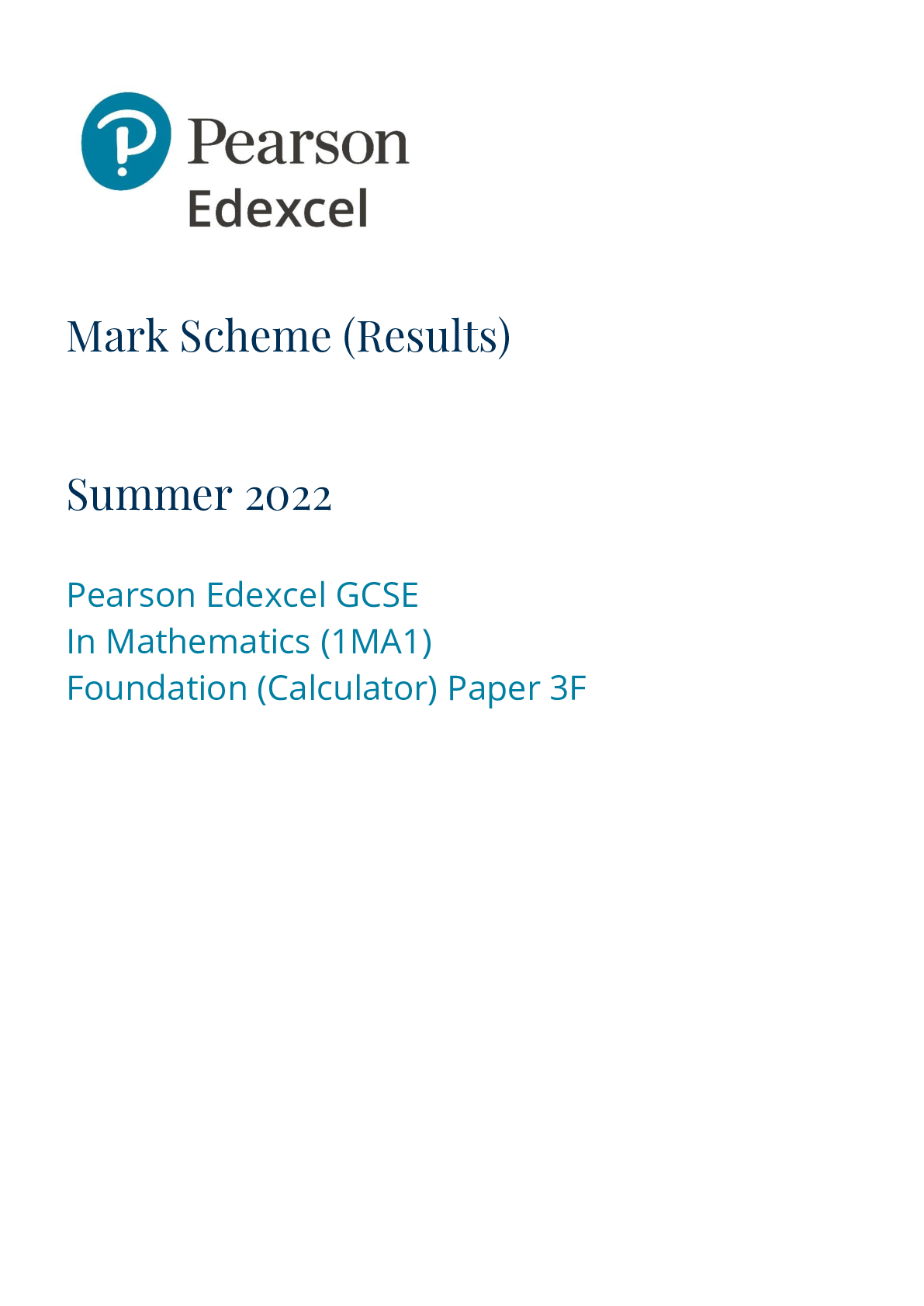
Buy this document to get the full access instantly
Instant Download Access after purchase
Add to cartInstant download
Reviews( 0 )
Document information
Connected school, study & course
About the document
Uploaded On
Apr 04, 2023
Number of pages
22
Written in
Additional information
This document has been written for:
Uploaded
Apr 04, 2023
Downloads
0
Views
77

